Ductless Biosafety cabinet - educational
Classroom Demonstration
- Air Science - EDU
ANSI, OSHA, AFNOR, BSI
The EDU™ Series Ductless Demonstration Fume Hoods are designed for individual and group applications where clear front, side and rear walls permit 360° visibility.
The high efficiency carbon filtration and air management system protects both the user and the classroom environment from hazardous vapors generated on and above the work surface.
The EDU™ series units are mounted on heavy duty transfer carts and are sized to fit through standard doorways for easy transportation from lab to lab.
EDU™ Series Ductless Technology
- Offers 360° visibility for full participation.
- Protects the class from toxic fumes.
- Available in four models to meet general applications.
- Filters are easy to change.
- Improved filter clamping prevents bypass leakage.
- Low airflow alarm warns of unsafe conditions.
- Compliant with ANSI, OSHA, AFNOR and BSI safety standards.
- Portable unit with transparent front, back and side walls for maximum visibility.
- The EDU™ series offers personnel and environmental protection, optimal energy savings and zero toxic emissions to the room.
State-of-the-art filter
At the heart of the EDU Series product line is innovative carbon filtration technology. The Multiplex Filtration System consists of a pre-filter, main activated carbon or HEPA/ULPA filter, and safety activated carbon or HEPA/ULPA filter. The system permits a customized combination of filter media and configuration for chemical and physical adsorption specific to each application need. The Air Science carbon filtration technique is based on enhanced, activated carbon particle formulations from specially selected, naturally occurring raw material that is superior to wood or other organic sources. The carbon is treated to attain the proper porosity and aggregate surface area and to react with several ranges of aerosolized chemicals moved through the filter by an air handling blower.
Enhanced filtration
Air Science® ductless fume hoods isolate and trap chemical vapors to prevent ecological impact through release into the environment. The Air Science Enhanced Filtration Technology (EFT) is a universal filtration system developed for use with a wide range of core chemical families. These include organic acids, alcohols, aliphatic hydrocarbons, aromatic hydrocarbons, esters, aldehydes, ketones, ethers, halogens and others. Although the EFT system is weighted to accommodate these families, it can handle inorganic acids as well. The Air Science EFT system is available as an option on Air Science EDU series ductless fume hoods.
Multiplex Filtration technology
At the heart of the EDU Series product line is innovative filtration technology. The Multiplex Filtration System consists of a pre-filter, main activated carbon or HEPA/ULPA filter, and safety activated carbon or HEPA/ULPA filter. The system permits a customized combination of filter media and configuration for chemical and physical adsorption specific to each application need. The Air Science carbon filtration technique is based on enhanced, activated carbon particle formulations from specially selected, naturally occurring raw material that is superior to wood or other organic sources. The carbon is treated to attain the proper porosity and aggregate surface area and to react with several ranges of aerosolized chemicals moved through the filter by an air handling blower.
The Multiplex feature permits one or more filtration options to be combined to meet a wider range of multiple-use applications. The EDU Fume Hood can be equipped with a single activated carbon main filter or with a stacked configuration which combines two main filters, each activated to adsorb one or more specific vapors or family of vapors. For safety against particulates, an optional HEPA or ULPA can also be added. When used with a HEPA/ULPA filter, the ductless fume hood may be applied as a Class I Biological Safety Cabinet. The carbon filter is sized to fit the specified product model number and configured to optimize airflow across 100% of the filter surface area. The self-contained assembly maximizes filter efficiency, prolongs filter life, optimizes diffusion and saturation, and improves user safety.
P. Electrostatic Pre-Filter: Protects the main filters from aerosols, mists, dust, and particulates.
C. Activated Carbon Main Filter: A single, blended, or stacked filter configuration.
H. HEPA/ULPA Filter, Optional: Both HEPA and ULPA filters use micro-glass fiber media designed to capture fine particles and biologicals. Both filters can capture particles smaller than the micron size for which they are tested. HEPA and ULPA filter efficiencies are 99.995% at 0.3 microns and 99.9995% at 0.12 microns respectively.
Each filtration system is selected for its specific application. Carbon filters are available in more than 14 configurations for use with vapors of organic solvents, acids, mercury, and formaldehyde.
HEPA/ULPA filters can be added for biological safety.
Easy to Install
The ductless fume hood is self-contained and does not require venting to the outside. Many units are portable and may be moved with minimal downtime and without filter changes. Set-up, operation, and filter maintenance are straightforward.
Energy Efficient
Because filtered air is returned to the room, no demands are required of the facility HVAC capacity for make-up air.
Cost Effective
Facility ductwork, HVAC, and construction costs are eliminated.
Safe to Use
Cabinet airflow and face velocity protect users from incidental exposures to fumes.
Self-Testing (select models)
Electronic airflow monitoring assures continuous safety. An electronic gas sensor monitors carbon filter performance.

Biosafety cabinet airflow requirements met and exceeded
Air Science Multiplex Filtration offers a range of options for high performance protection.Multiplex filter configuration permits a customized combination of filter media for a broad range of chemical families and biological agents if required. EFT™ filtration technology broadens the Air Science application for ductless fume hoods. A high capacity air handling system delivers face velocity of 100 fpm. EDU Series fume hoods maintain a constant face velocity of 100 FPM in compliance with U.S.A. and International standards for safety and performance. Contaminated air is pulled through the Multiplex filtration system where activated carbon adsorbs chemical vapors, returning clean air to the room.The main filters are easy to replace; no tools required. The filter clamps tightly against the filter gasket to prevent filter bypass and to maintain filter integrity.
- A. Filter I.D. Window: convenient, strategically placed front cover window shows the installed filter part number and installation date to encourage timely filter replacement.
- B. Control Panel: Electronic controls and displays include switches for the blower and low airflow alarm.
- C. Airflow Alarm: Low airflow alarm continuously monitors filter loading and alerts user when service is needed.
- D. Air Velometer: An analog air velocity meter is positioned in the user's field of vision.
- E. Steel Support Frame: The chemical resistant epoxy coated steel frame adds mechanical strength. Optional all polypropylene construction is available if desired; see accessories.
- F. Hinged Front Sash: When closed, the cabinet sash protects the contents from inadvertent external contact and better isolates the air within. The sash is easy to open and close.
- G. Work Surface: The internal work surface is fitted with a standard polypropylene spill tray (available in white and black). An optional stainless steel tray is also available, see accessories.
- H. Pass Through Ports: Electrical cords and cables are safely routed into the cabinet through ports on the back.
- I. Electrostatic Pre-Filter: The electrostatic pre-filter is accessible from inside the chamber and 91% effective down to 1-3 microns.
- J. Filter Door Key: Filter access keys prevent unau-thorized removal or accidental exposure to dirty filters
- K. Internal Manual Speed Controller: Authorized personnel set the centrifugal fan motor speed as desired.
- L. Locking Casters: Permit complete portability from lab to lab. The overall width and height are sized to fit easily through standard doorways.
- M. Isolated Single Switch Electrical Sockets:13 amp.
- N. Quick release connections: For water, waste, and gas.
- O. Optional petcocks are available for gas and water. An optional gooseneck faucet is positioned over an optional chemically-resistant polypropylene sink cup integrated into the work surface
Fume hood competition comparaison
Independent Test Results Independent testing confirms that the Air Science EFT system is superior in critical areas to other “green” fume hood systems recently introduced to the industry. AFNOR NFX 15-211 requires that three chemicals (isoproponal, cyclohexane, and hydrochloric acid) be tested under very precise conditions to ascertain and establish retention capacity at 1% of the threshold limit value (TLV) for each chemical.
PRODUCT SPECIFICATIONS
Filtration EDU-M-40 EDU-M-48 EDU-M-60 P15-XT-CART-MCC-40 P10XL-CART-RC-P P5-24XT-CART
Airflow1 | 220 cfm | 220 cfm | 220 cfm | 220 cfm | 145 cfm | 135 cfm |
Pre-Filter | 100 fpm | 100 fpm | 100 fpm | 100 fpm | 100 fpm | 100 fpm |
Construction
Construction | <… White epoxy steel frame and head unit, Clear sides and back panel. …> |
Blower | <… ebm-papst EC blower. …> |
Controls | <… Main On/Off. …> |
Electrical | <… 120V, 60Hz or 230V, 50Hz voltages available. Specify when ordering. Other voltage options available. …> |
Monitoring | <… Low airflow alarm, standard. …> |
Efficiency
Power Consumption1 | 39 watt | 59 watt | 60 watt | 39 watt | 62 watt | 24 watt |
Lighting | <… LED lighting. …> | |||||
Noise, dBA3 | < 54 | < 58 | < 58 | < 55 | < 57 | < 54 |
1) All measurements are with Filter Type ASTM-030.
2) Average airflow measured 6” (150 mm) from filter face.
FILTER SPECIFICATIONS
Purair Model EDU-M-40 EDU-M-48 EDU-M-60 P15-XT-CART-MCC-40 P10XL-CART-RC-P P5-24XT-CART
Safety Filter, Optional* | (1) | (1) | (1) | (1) | (1) | (1) |
Primary Filter(s)* | (1) | (2) | (2) | (1) | (1) | (1) |
Pre-Filter* | (1) | (1) | (1) | (1) | (1) | (1) |
* For specific examples refer to Multiplex filtration system summary on page 6.
1) Energy consumption disclosure is based on internal testing with primary filters during normal operation. Power consumption published is nominal and dependent on cabinet size.
FILTER SUMMARY | |
| |
Formula |
Description |
GP Plus! | The most widely used filter in the range, primarily for solvent, organic, and alcohol removal. |
ACI Plus! | Neutralizes volatile inorganic acid vapors. |
ACR | Iodine and methyl iodide vapors as well as low level radioactive iodine. |
ACM | Mercury vapor. |
AMM | Removes vapors from dilute ammonia solutions and to remove low molecular weight amines. |
SUL | Designed to remove hydrogen sulphide and low molecular weight mercaptans. |
CYN | Removal of hydrogen cyanide. Many cyanide compounds will evolve HCN gas if acidified, so this filter is normally specified if working with any cyanide compound. |
FOR | Designed to oxidize formaldehyde and glutaralde- hyde fumes. It is widely used in hospital pathology laboratories. |
EDU | Designed to handle chemicals normally used in a university level chemistry curriculum. |
MIL | Designed for military applications involving war gasses. |
HEPA/UPLA | Powders, particulates, and biologicals. |
| Universal filtration. |
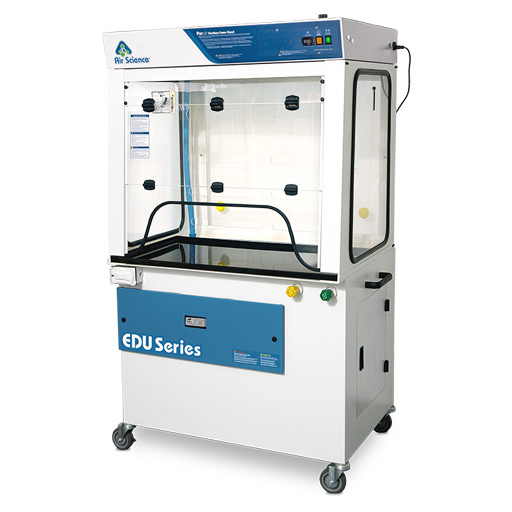
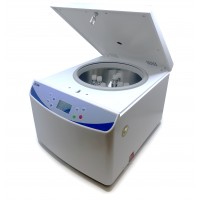
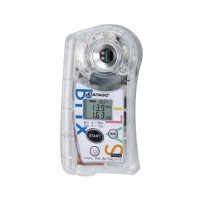
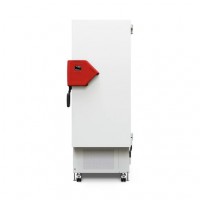
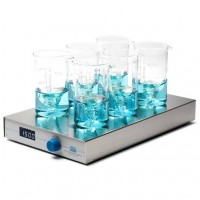

Do you have a question?
min 10 ch